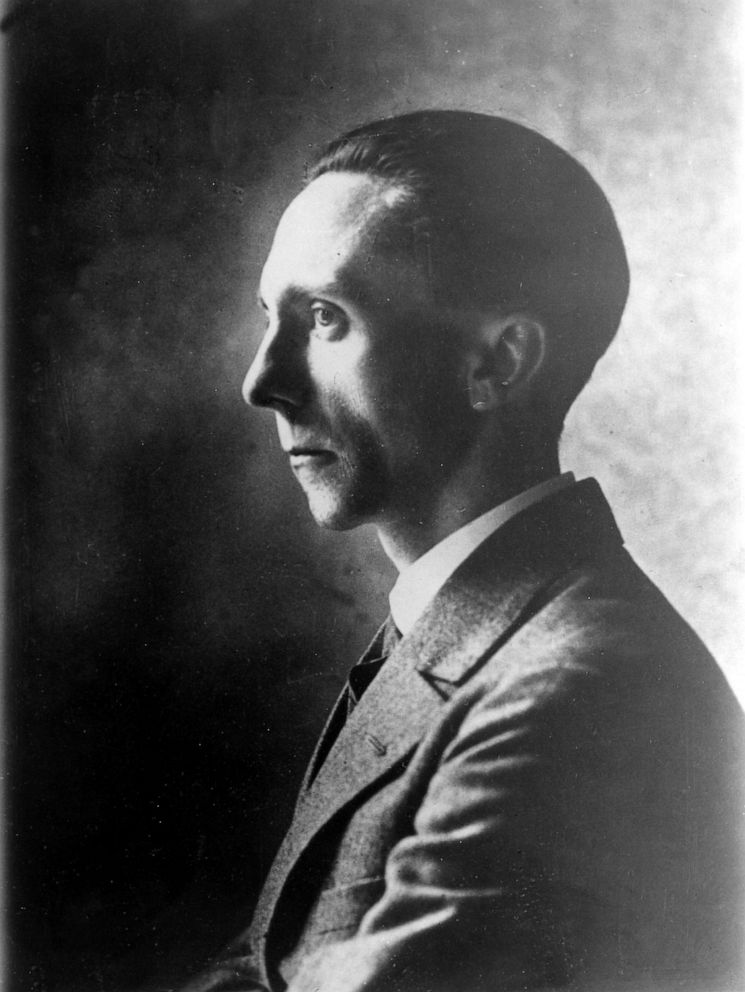The newest vehicle for the oldest hatred: OPINION
Social media is just the latest way to sow hatred of Jewish people.
On Wednesday, Jan. 6, the day insurrectionists stormed the Capitol, the appearance of the term "6MWE" increased roughly 60% on Twitter compared to the week before. The slogan is anti-Semitic code for "6 million wasn't enough."
On the same day, according to the Network Contagion Research Institute, the appearance of the words "Jewish" and "Soros" each more than doubled. At 1 p.m. EST, as Vice President Mike Pence refused to reject electoral votes that were contested by right-wing conspiracy theorists, the use of the word "Soros" increased 150% compared to 8 a.m. An hour later, while Senate Majority Leader Mitch McConnell objected to attempts to overturn the presidential election, the use of the word peaked, having risen 775% from 8 a.m.
Conspiracy theories containing anti-Semitic disinformation play on primal fears about obsolescence and loss of status. They revolve around themes that resist disconfirmation: greed, pretense, the illegitimate appropriation of status and privilege, clandestine power, unseen control and genocidal bloodlust. QAnon conspiracists who were among those who stormed the Capitol not only insist that the election was stolen, many subscribe to a form of anti-Semitic blood libel. In their version, powerful Democrats and Hollywood elites promote what some are calling "Jewish pedophilia" and kill their young victims in order to ingest their blood. Between July and the end of September, QAnon Facebook accounts disguised as anti-child-trafficking accounts increased their membership by 3,000%.

Each time there is a breakthrough in media technology, it allows the spread of disinformation in a way that's highly contagious. During transitions to new technology, people and groups attempting to seize power can act quickly to capitalize on media consumers' technological naiveté. By propagating disinformation and appealing to felt grievances, conspiracy theorists create the impression that they have important information being kept from the public.
Martin Luther realized the potential of printing technology for amplifying his brand of anti-Semitism. "Be on your guard against the Jews," he published in "On the Jews and Their Lies," referring to Jews as, among other things, a "brood of vipers," "thieves and robbers," "lazy rogues," and, when in synagogue, "a den of devils."
In that book, his "sincere advice" was to "set fire" to Jews' synagogues and schools, "raze" and "destroy" their homes, forbid rabbis from teaching "on pain of loss of life and limb," abolish "safe-conduct on the highways" for Jews, and take "all cash and treasure of silver and gold" from them.
Luther's anti-Semitism was especially admired by Adolf Hitler. Not only did he take Luther's advice, he put radio, the new media technology of that time, to brutal use against Jews. Nazi broadcasts included big band music, conspiracy theories about Jews as puppet-masters of World War I, charming stories of the German "volk" and descriptions of Jewish people as aliens and vermin.
Joseph Goebbels, the Nazi's minister of propaganda, used the airwaves to convince listeners that Jews were "the enemy of the world, the annihilator of cultures, the parasite among nations, the son of chaos, the incarnation of evil, the ferment of decay, the formative demon of mankind's downfall."

More than half a millennium after the invention of the printing press, we're undergoing another technological revolution in the dissemination of anti-Jewish disinformation. Speakers at the rally before the Capitol siege promulgated a notion disseminated on Twitter that George Soros is secretly controlling the Chief Justice of the U.S. Supreme Court. A photo of a rioter wearing a "Camp Auschwitz" shirt circulated widely online. The shirt read "work brings freedom," a loose translation of "Arbeit Macht Frei," words that appeared at the gates of Auschwitz and other Nazi concentration camps. Reportedly, the back read, "staff." Within hours, online retailers offered similar items for sale.
Last month, the NCRI reported that around the time of elections, transitions of power and social unrest, anti-Semitic memes and codewords spike. Soros figures prominently in various conspiracy theories disseminated on both the left and the right. And, NCRI noted, Russian trolls intentionally stir anti-Semitism on both sides "by stoking fears of secret Jewish control of not only Antifa but also white supremacist groups."
Social media-driven anti-Semitism has unprecedented and instantaneous worldwide reach. Ideas can escalate from social media to real-world violence faster than their targets or law enforcement can react. Extensive NCRI analysis of anti-Semitism on social media found that the deadly attack on Jews at the Tree of Life Synagogue in Pittsburgh in 2018 was preceded on social media by a high volume of anti-Jewish, Soros-related memes. These memes promoted the conspiracy theory that migrant "caravans" from Central America were being engineered by Jews. The report notes that "minutes before committing the deadly attack on the Tree of Life Jewish synagogue," the Pittsburgh shooter posted that the Jewish group HIAS "likes to bring invaders in that kill our people."
As with prior iterations of anti-Semitic disinformation, depictions of Jews as parasites, vermin, aliens, puppeteers and global conspirators appear now online. But unlike with earlier technology, these signals now disguise themselves as inside jokes and social justice jargon. And classic antisemitic themes disseminated on mainstream social media platforms are often hidden within concerns about the consequences of globalism on the right, and in the moral discourse of social justice on the left.
The question is whether consumers of social media will be able to recognize anti-Semitic conspiracy theories and reject them. Or, like so many other consumers of new media technologies throughout history, will they be seduced into identifying the source of their grievances as an infernal -- and singularly eternal -- "other"?

Social media is the newest vehicle for the oldest hatred. It is the most efficient, and potentially the most dangerous, instrument for disseminating anti-Semitism in history. But this problem is not just a Jewish one. Disinformation permeates the online space -- often, but not only coated in antisemitic tropes. As painfully illustrated on Jan. 6, dismissing it as a problem of a small, fringe, lunatic online community only enables it to grow into a large-scale, dangerous, extremist, real-world movement with members who are more than willing to engage in violence. As history has shown, if we fail to protect one religion, one people or one country, we fail to protect them all.
Pamela Paresky is a visiting senior research associate at the University of Chicago's Stevanovich Institute on the Formation of Knowledge. She serves as senior scholar at the NCRI and as a strategic consultant to the Inter-Parliamentary Task Force on Anti-Semitism.John Farmer Jr. is a former attorney general of New Jersey, the director of the Eagleton Institute of Politics at Rutgers University, where he also leads the Miller Center for Community Protection and Resilience, and served as senior counsel to the 9/11 Commission.




